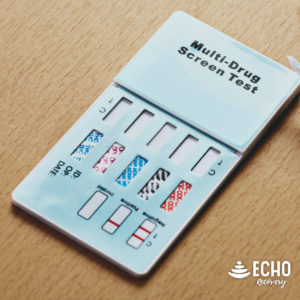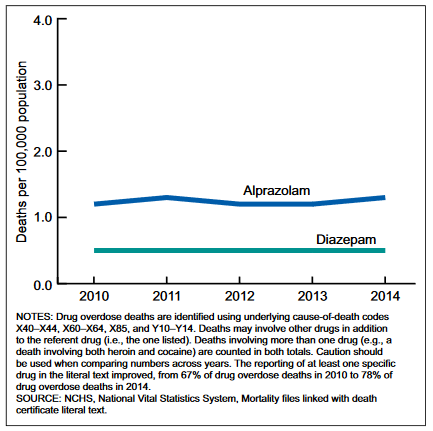Opioid addiction is an ongoing problem in the United States, and every state has been reporting record numbers of new opioid addiction cases and overdose deaths year after year, for more than a decade. One of the reasons behind this ongoing epidemic is the tremendous addictive power of opioids. While they are tremendously effective painkillers, they are also very easily habit-forming and addictive. Once addiction sets in, withdrawal symptoms are very uncomfortable and may even turn fatal.
What Is Methadone?
Methadone is a synthetic opioid painkiller first used by the United States during World War II when injured soldiers needed painkillers, but morphine supplies were low. In 1971 the Food and Drug Administration (FDA) officially approved the use of methadone as a viable treatment for opioid addiction and other forms of substance abuse.
Today, the FDA allows the prescription of methadone for addiction treatment purposes as well as chronic pain. However, methadone remains a Schedule II controlled substance at the federal level because of its powerful effects and potential for abuse.
Short-Term Uses For Methadone
Methadone can help during opioid addiction recovery by helping a recovery patient taper off of his or her typical regimen of opioids. Acute opioid withdrawal symptoms are incredibly uncomfortable and often life-threatening in advanced cases of addiction. Sudden cessation can not only lead to intense cravings for more opioids, but also potentially fatal medical conditions like abnormal heart rate, organ failure, or stroke.
When an individual enters opioid addiction treatment, the first phase of treatment is detox, during which the attending caregivers flush the last of the drugs out of a patient’s body. Medically assisted detox generally offers the best chances of a successful detox process, while mitigating the risk of life-threatening medical complications from withdrawal symptoms.
Some treatment centers prescribe detox patients methadone because it offers relief from the symptoms of opioid withdrawal without the dangerous side effects of opioids like morphine or hero in. Methadone maintenance therapy has proven to assist with withdrawal symptoms and reduce the likelihood of relapse. However, there are risks with any type of methadone use, even in the short term. Long-term use entails even greater risks.
Long-Term Methadone Maintenance
Methadone is a synthetic opioid and shares many painkilling properties with other opioids like heroin and morphine. However, the effects are generally less pronounced than natural opioids or other synthetic opioids like fentanyl. Some doctors prescribe methadone as a treatment for chronic pain. A drug maintenance prescription like this may help a patient manage his or her chronic pain symptoms, but since methadone activates the opioid receptors in the brain it inherently carries a risk of chemical dependency.
Risks Of Long-Term Methadone Use
 Methadone maintenance therapy may entail slightly less of a risk than abusing stronger opioids, but it is crucial for anyone undergoing methadone maintenance therapy to understand the risk of addiction and the signs of a habit forming. If a patient starts to experience withdrawal symptoms, he or she should speak with the prescribing doctor immediately to discuss alternative medications or even substance abuse treatment.
Methadone maintenance therapy may entail slightly less of a risk than abusing stronger opioids, but it is crucial for anyone undergoing methadone maintenance therapy to understand the risk of addiction and the signs of a habit forming. If a patient starts to experience withdrawal symptoms, he or she should speak with the prescribing doctor immediately to discuss alternative medications or even substance abuse treatment.
Over time, the human body naturally builds a tolerance to opioids with consistent use. A prescribed dose may work for managing chronic pain for months or even years before a patient starts to notice that a single dose is no longer as effective. This, unfortunately, encourages some methadone maintenance patients to begin abusing methadone by taking too much at each dose or altering the pills for more concentrated effects. For example, crushing a methadone pill and snorting the powder causes intense feelings of euphoria similar to those caused by a dose of heroin. These powerful reactions can quickly cause a methadone abuser to build an even stronger tolerance, propelling him or her further into chemical dependency.
Side Effects Of Methadone
Methadone side effects vary greatly on an individual basis. Milder short-term side effects may include upset stomach, sexual dysfunction, dry mouth, lightheadedness, and drowsiness. More serious possible side effects include fainting, seizures, anaphylactic shock, and even death from overdose. So how long does methadone stay in your system? It usually lasts up to two weeks but may remain detectable for even longer. The initial effects typically wear off within a few hours, but individuals who use a methadone maintenance treatment for chronic pain generally report long-lasting relief from each dose.
New Methadone Clinics Appearing Nationwide
In light of the ongoing opioid crisis in the U.S., new methadone clinics are appearing in metropolitan areas all over the country more frequently in recent years. A proposed methadone clinic in Baltimore met with protests from the local community, due to their concerns about the location of the clinic being too close to a local school, despite the fact that area crime statistics indicate that crime is less frequent around methadone clinics than liquor stores and corner shops.
Is Methadone Worth The Risk?
Despite the fact that methadone is a prescription medication that may aid in opioid addiction recovery, it may equate to trading one addiction for another in some patients. Everyone processes opioids differently, and depending on how long an addiction has lasted, and the severity of the addiction, an individual may find relief from opioid withdrawal symptoms with methadone treatment or the methadone may simply cause his or her addiction to last longer. However, some have made the argument that replacing one opioid for a less dangerous opioid is essentially the same as harm reduction.
Alternatives To Long-Term Methadone Use
Some chronic pain patients use methadone on a daily basis for several years without experiencing addiction or withdrawal symptoms, and the methadone manages their chronic pain well enough to carry on with daily activities. However, any long-term opioid use carries a risk of addiction. Any patient who relies on methadone maintenance therapy should closely follow his or her prescribing doctor’s directions for proper dosing and report any adverse symptoms immediately.
While methadone may help during opioid detox, this should only be a temporary measure that prepares the patient for rehab. Methadone can help reduce the appearance of withdrawal symptoms but may also inadvertently prolong an opioid addiction. Ultimately, methadone may offer relief from acute opioid withdrawal symptoms and chronic pain, unrelated to addiction, with appropriate use as directed by a physician, but it is essential to ensure responsible use or explore alternatives whenever possible to avoid the significant risk of methadone addiction.

Experienced Chief Executive Addiction Recovery and Mental Health Professional
Business professional in the Addiction Recovery and Mental Health industry for the past 26 years. Caring, compassionate and strongly motivated to make a difference in the organizations I am affiliated with and welfare of the population we serve. Currently focused on advocating, educating and developing projects leveraging evidence based, real time technology to support individuals in recovery.


 Amidst the growing opioid crisis, Annapolis may soon offer test strips for fentanyl detection. A test kit could be as inexpensive as $1 per unit. The test itself is as easy as sprinkling a little bit of the drug into a cup of water and then putting the strip in the water. One line on the strip means there is fentanyl, two lines means there is none.
Amidst the growing opioid crisis, Annapolis may soon offer test strips for fentanyl detection. A test kit could be as inexpensive as $1 per unit. The test itself is as easy as sprinkling a little bit of the drug into a cup of water and then putting the strip in the water. One line on the strip means there is fentanyl, two lines means there is none.













